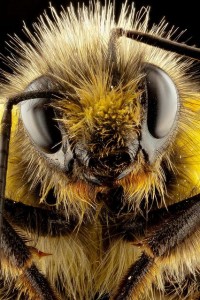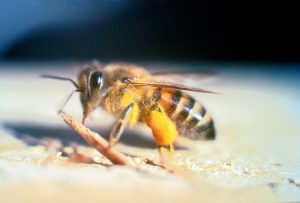How Bees Produce Honeycomb
By Sy Maher
The orderly pattern of the beehive is truly amazing and has been copied repeatedly in art and architecture. Bees construct hexagonal cells (six-sided), a pattern that has come to be known for its incredible strength, and structure. The production of honeycomb cells is a miraculous process.
Bees eat honey and turn it into wax using a special gland in their abdomen. A bee has eight of these glands. They have to consume eight ounces of honey to produce one ounce of wax. Also, the bee’s ability to produce wax is only ten to twenty days. As a bee ages, it moves on to work in other vital roles in the hive.
Wax is discharged from pores through the young bee’s abdomen and accumulates as little flakes on their bodies. They then chew the wax. Worker bees will also pull flakes from the body of the bee producing wax. The sizes of these wax glands depend on the age of the worker. As bee’s chew, enzymes from their saliva mix into the wax. Water is also kneaded into the substance until the wax is pliable, like clay.
Bees warm and mold the wax using their antennae, mandibles, and legs to build the six-sided cell. This activity is repeated thousands of times until finally, these cells grow into a beehive. Honeycomb cells are used to contain their larvae and stores of honey and pollen.

Natural Hive
It doesn’t matter if the hive is natural or artificial the cells are always horizontally.
A honey bee’s world is truly astonishing. Their bodies and their society utilize little to exist. How they use resources pollinates vegetation both edible and beautiful. If only we learn the way of the bee, we could become a more sustainable society.
Sources
https://en.wikipedia.org/wiki/Beeswax
https://www.perfectbee.com/learn-about-bees/the-science-of-bees/cells-in-honeycomb/
https://en.wikipedia.org/wiki/Honeycomb


